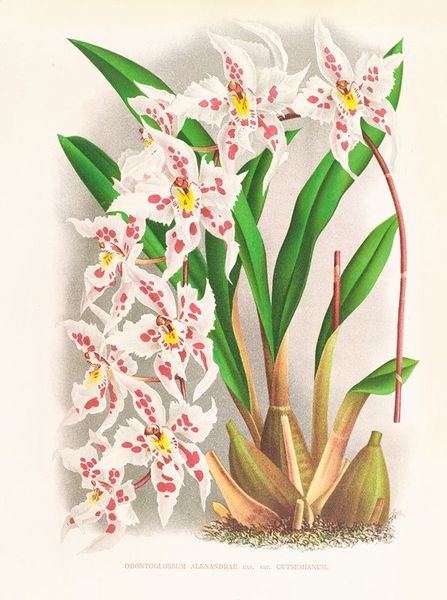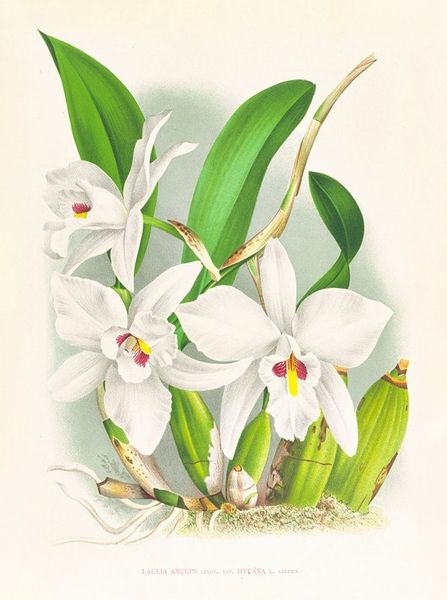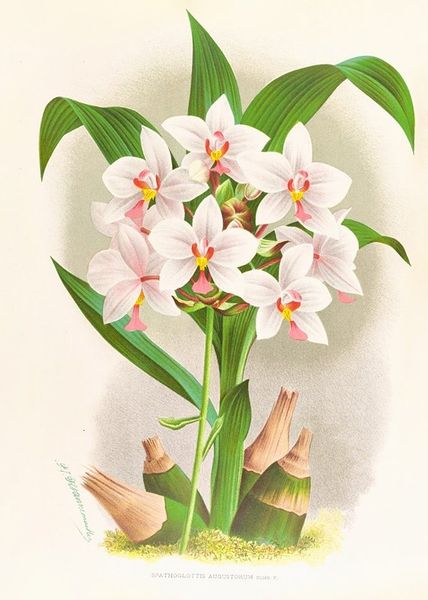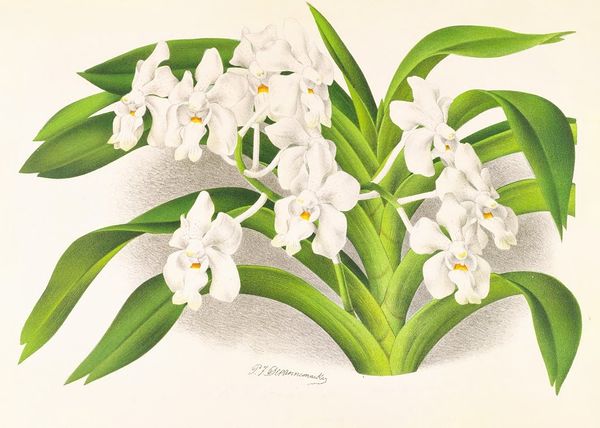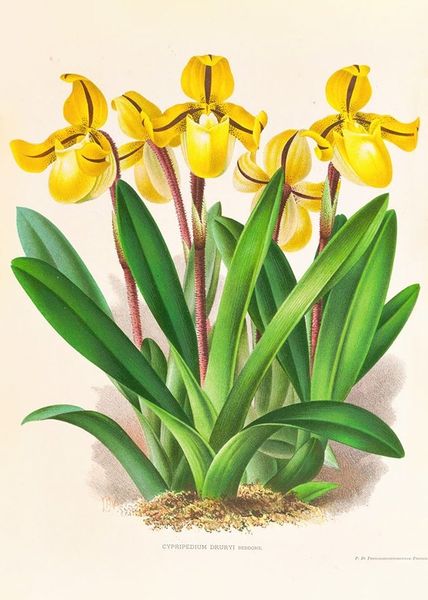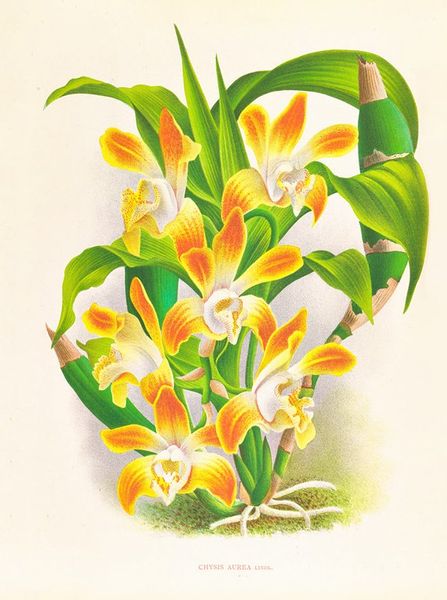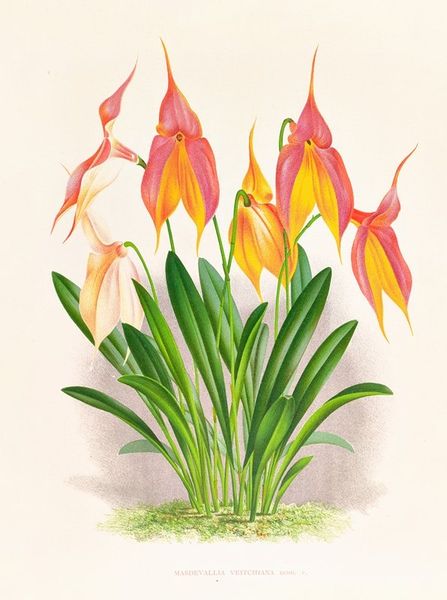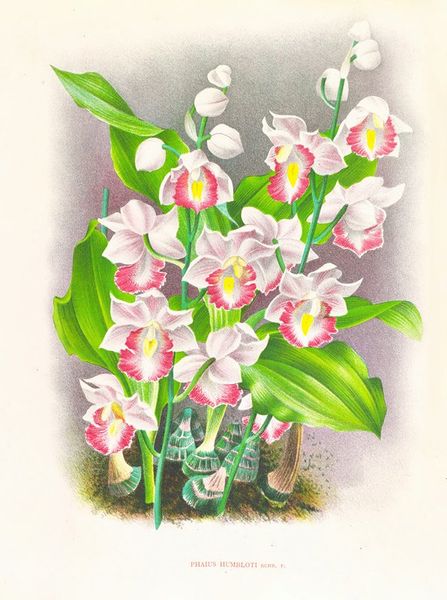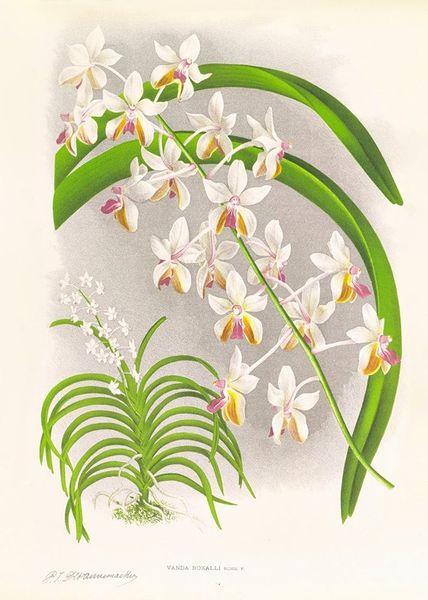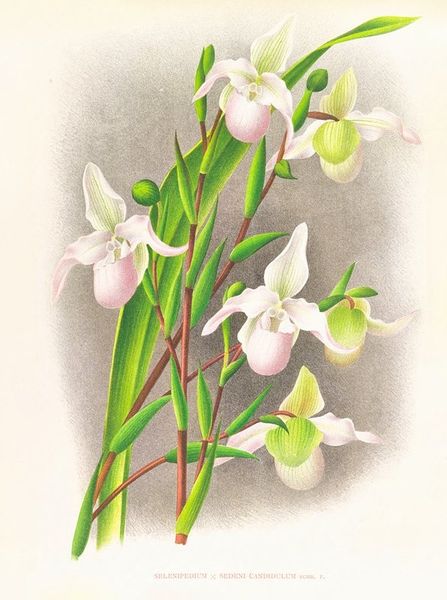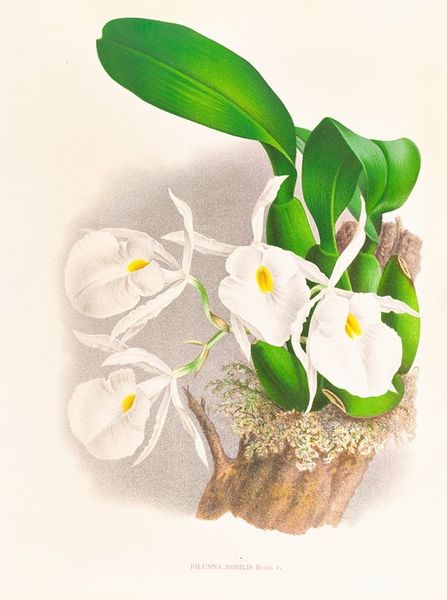
drawing, watercolor
#
drawing
#
botanical illustration
#
watercolor
#
botanical drawing
#
watercolour illustration
#
botanical art
#
realism
Copyright: Public Domain: Artvee
Curator: This exquisite botanical illustration is "Coelogyne ocellata," dating from between 1885 and 1906, by Jean Jules Linden. It's executed with delicate watercolors and drawing techniques. Editor: It strikes me as remarkably pristine. The white petals against the subtle green foliage evoke a sense of purity and almost clinical observation. It's a very restrained palette. Curator: The piece reflects the immense popularity of botanical illustration during that period. These detailed images weren’t just about art, they were crucial scientific records, cataloging and celebrating the natural world under imperial expansion. Editor: Exactly, the very act of documenting such an exotic bloom, especially an orchid, resonates with status. Orchids themselves had become potent symbols. The orchid was shorthand for luxury, otherness and possession during that time, wasn't it? Its ephemerality becomes especially prized in still-life form. Curator: Absolutely. Also, note the exacting precision – each vein, each petal is rendered with incredible detail. The very dedication speaks to specific demands placed on natural science at this moment, and the institutions that were funding its study. Editor: And that golden eye at the center of each flower? It draws the eye, suggesting both the rarity and preciousness. I'd say it echoes the human obsession with the exotic and undiscovered, it creates a kind of mirroring. Do you find that reflected in much of his other work? Curator: To a certain extent, yes. Many of Linden’s drawings capture that almost fetishistic attention to detail that wealthy European collectors expected when documenting newly found species. It becomes an extension of their desire to control. Editor: Interesting. I had interpreted the botanical realism as a lens that speaks to our collective memories of discovery and curiosity but hearing your point of view allows us to re-examine and broaden the scope through the cultural context. Curator: Indeed. It reminds us that art like this, while beautiful on the surface, is also deeply embedded in social structures and institutional agendas. Editor: A crucial insight! The flower suddenly opens to new understanding.
Comments
No comments
Be the first to comment and join the conversation on the ultimate creative platform.
